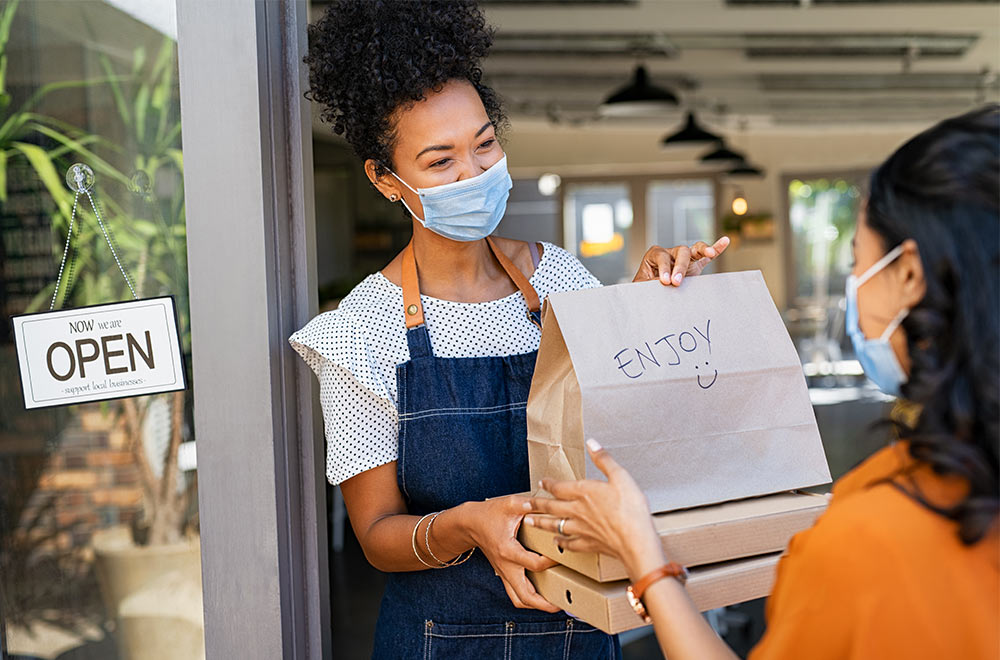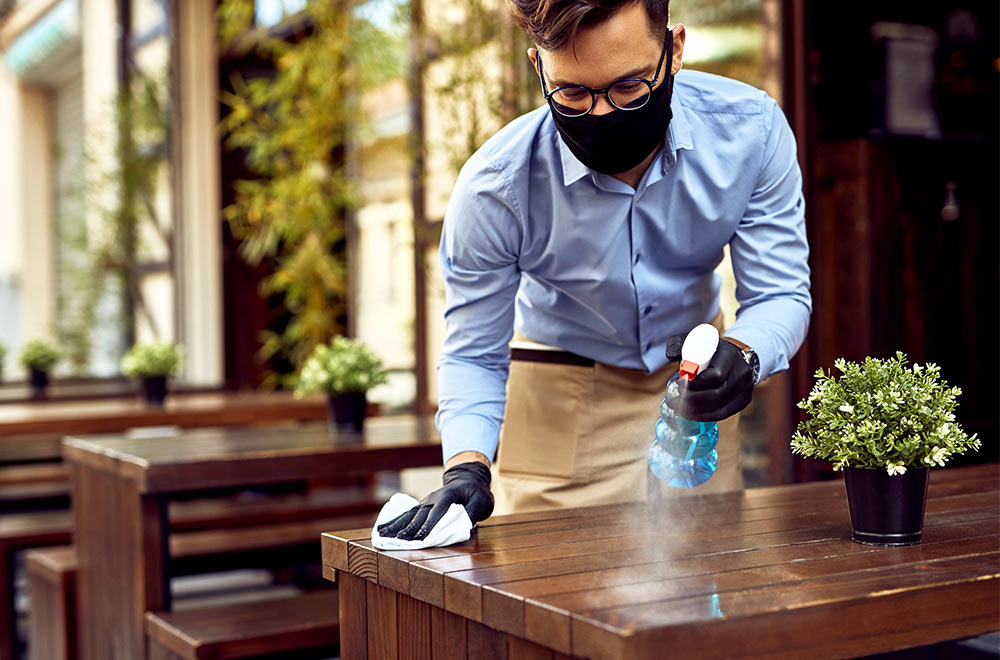There’s no denying it, COVID-19 has been tough on the restaurant industry. In December of last year, the National Restaurant Association (NRA) estimated that about 17% of the nation’s restaurants, or 110,000 establishments, closed their doors permanently. Whether you remained open or shuttered temporarily, you’ve most likely weathered state-mandated shutdowns and are currently navigating cautious, phased re-openings. Much can be said of the ingenuity and savvy of restaurant owners like yourself who are riding the waves of COVID restaurant trends.
In the whirlwind that was last year, we saw takeout save the day, the morning meal rush decline as workers stayed home, and outdoor dining spaces become fixtures—even during the coldest months. As the industry finds its footing, we’re all looking forward to the day when things get back to “normal,” even as we recognize that the definition of normal has changed considerably. Along those lines, here are some of the COVID-related dining trends that are most likely here to stay:
Cleaning and sanitation
Pre-COVID, restauranteurs were no stranger to food inspections. Usually carried out an average of 1-3 times per year, every state has updated their inspection guidelines to reflect FDA and OSHA recommendations that limit the transmission of COVID-19. Staying up to date is crucial, not just to pass inspection, but to inspire the confidence needed for consumers to dine out. In Zagat’s Future of Dining Study, diners were asked what would most influence their decision to dine out after COVID restrictions were lifted. An overwhelming 75% cited “health & safety concerns.” Looking forward, you will want to not only build your reputation on great food and service, but a commitment to keeping your diners and employees safe through clean, safe food preparation and serving practices.
What this looks like is different for every restaurant, but for most it includes continued transparency in cleaning practices—signage and advertisement of regular sanitation helps customers feel safe. Also, many are looking towards hygienic (and eco-friendly) options like single-use serving utensils made from biodegradable/sustainable materials and non-print menus, which are becoming increasingly popular with the rise of QR codes and in-app ordering at the table. Highly visible sanitizing stations for diners and workers placed strategically throughout the restaurant, as well as contactless payment, even while dining in, are most likely here to stay.

Takeout and delivery
Amid 2020’s shelter-in-place orders and shutdowns, third-party delivery apps saw their business double. However, when many dining rooms opened across the country late last year, OpenTable still reported a decrease of 52% in the number of seated diners. As more individuals are vaccinated and restrictions lift, expect the caution around dining out to remain. Now is the time to make sure that your takeout and delivery processes are seamless. Unsure of where to start? Statistics show that 64% of diners prefer to order direct through the restaurant for delivery. Perhaps it is time to set up your own delivery service—it’s a revenue-generating investment that is also likely to increase overall customer satisfaction.
Similarly, with takeout you’ll want to explore additional channels. If you don’t have the space to create a drive-thru window, consider adding curbside pickup—50% of diners last year said they are using the service more than before. Not only is it a great way to create another point of contact with customers, but curbside service can help redirect some of your drive-thru traffic: eliminating bottlenecks, potentially shortening drive-thru wait times, and creating the perception of immediacy. For the best customer experience, consider integrating your curbside pickup/delivery options within your app or website.
Value
Consumers will be driven by value moving forward. Last year, QSR’s data showed that 40% of diners were looking for “a good value for the money” when dining out. Surprisingly, attributes like variety of menu offerings, atmosphere, and even convenience were on the decline. In general, the markets are rebounding better than most predicted, but 2020’s high unemployment rates and market instability cast a long shadow, and consumers are cautious about how they spend their money.
Another force behind value-driven dining is the emergence of the home chef. Last year, folks picked up their spatulas more than ever, and though many will return to their pre-COVID dining patterns in the next year, it’s estimated that about 37% of diners will opt for home-cooked meals—a $50 billion dollar industry difference. In this type of climate, competition is high, and brand loyalty is key. Creating an in-house rewards program or linking up with a larger partner is a great way to incentivize guests to return. Loyalty programs encourage habit and create a sense of reward for customers each time they order from your establishment.
You may also want to consider offering coupons and family-style menu options. In April of last year Datassential asked consumers how they would save money after restrictions were lifted and 23% cited coupon usage, while another 15% percent said that they would order from shared or large portion menus.
Communication is (still) key
Adaptation was the name of the game in 2020, and while there’s no crystal ball, last year’s dining data can tell us much about what to expect moving forward. Positioning your restaurant to respond to these trends may increase overall customer satisfaction and show you exactly where to invest your resources to generate the most revenue.
Regardless of what changes you make, remember that transparency and communication with your customers is paramount. Updating your restaurant’s web page and social media to reflect changing hours, new/renovated dining areas, and current menus will help your patrons stay engaged. Much is changing in the industry, but this is also an unprecedented opportunity to reset and discover what works best for you and your customer base.
Be sure to regularly visit our free resource section dedicated to advising restaurants on how to navigate the changing rules and regulations during the COVID-19 pandemic.






